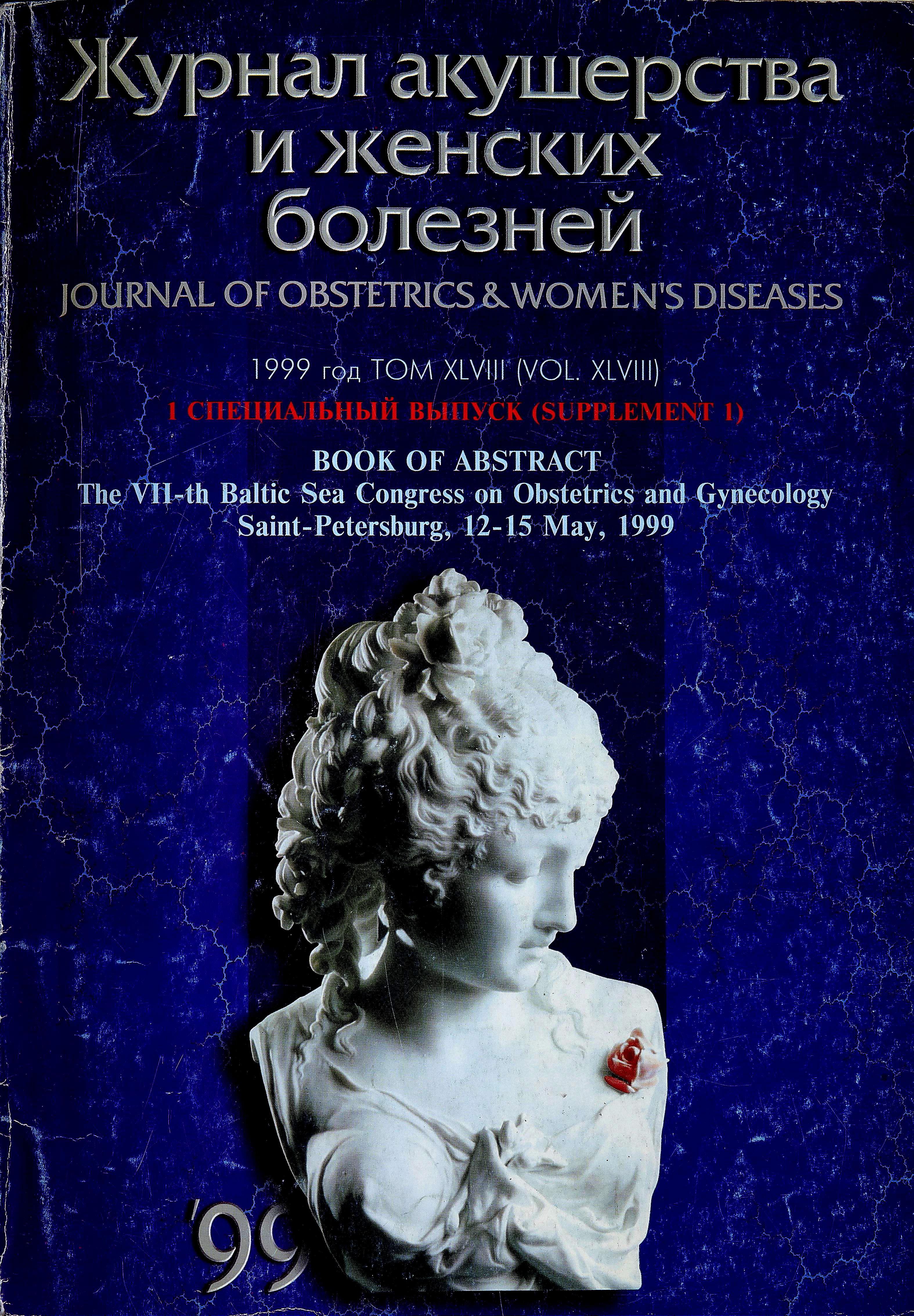The age aspects of pathogenesis of polycystic ovaries in patients with neuro-endocrine hypothalamic syndrome in conditions of goiter endemia
- Авторы: Suturina L.V.1, Kolesnikova L.I.1, Zibina V.D.1, Danusevich I.N.1, Darjaev Z.U.1, Sholochov L.F.1
-
Учреждения:
- Institute of Pediatrics and Human Reproduction, Russian Academy of Medical Sciences
- Выпуск: Том 48, № 5S (1999)
- Страницы: 155-155
- Раздел: Статьи
- Статья получена: 22.02.2022
- Статья одобрена: 22.02.2022
- Статья опубликована: 15.12.1999
- URL: https://journals.eco-vector.com/jowd/article/view/101448
- DOI: https://doi.org/10.17816/JOWD101448
- ID: 101448
Цитировать
Полный текст
Аннотация
Objective: To study the age aspects of pathogenesis of polycystic ovarii (PO) in the girls with pubertal hypothalamic syndrome (HS) and women with HS.
Ключевые слова
Полный текст
Objective: To study the age aspects of pathogenesis of polycystic ovarii (PO) in the girls with pubertal hypothalamic syndrome (HS) and women with HS.
Methods: The clinical examination of 78 girls aged 18,07+0,29 years and 114 women aged 27,8+1,03 years with neuroendocrine, trofic, vegeto-vascular and others manifestations of HS; ultrasound and hormone investigation (basal prolactin, LH and FSH levels, TSH and thyroid hormones have been conducted). The results of investigation have been calculated by generally accepted methods of variation statistics with the use of Student's criterion.
Results: The PO has been revealed in 35 per cent of girls with pubertal HS. In this group the frequency of perinatal pathology, accompanying hypothyrosis and hyperprolactinemia is reliably higher (p<0,01), than in girls without PO. The volume of ovaries and correlation of LH/FSH levels were in reverse correlative dependence on prolactin level. In the group of women of reproductive age PO were revealed in 50 per cent. PO developed more often in women with the beginning of HS in pubertal period. The correlation of LH/FSH in the patients with PO was higher then in the group of comparison, but did not reach “classic” (> 2) values due to hyperprolactinemia.
Conclusions: In the patients with HS risk of PO development increases depending on the duration of disease. Among the risk factors of PO in patients with pubertal HS the perinatal pathology is the most significant, but in reproductive age early hypothalamic dysfunction beginning is the main risk factor. Hyper-prolactinemia in both age groups is associated in certain degree with decrease of thyroid gland function in conditions of goiter endemia and, in turn, leads to decrease of LH/FSH correlation in the patients with PO.
Об авторах
L. V. Suturina
Institute of Pediatrics and Human Reproduction, Russian Academy of Medical Sciences
Автор, ответственный за переписку.
Email: info@eco-vector.com
Россия, Irkutsk
L. I. Kolesnikova
Institute of Pediatrics and Human Reproduction, Russian Academy of Medical Sciences
Email: info@eco-vector.com
Россия, Irkutsk
V. D. Zibina
Institute of Pediatrics and Human Reproduction, Russian Academy of Medical Sciences
Email: info@eco-vector.com
Россия, Irkutsk
I. N. Danusevich
Institute of Pediatrics and Human Reproduction, Russian Academy of Medical Sciences
Email: info@eco-vector.com
Россия, Irkutsk
Z. U. Darjaev
Institute of Pediatrics and Human Reproduction, Russian Academy of Medical Sciences
Email: info@eco-vector.com
Россия, Irkutsk
L. F. Sholochov
Institute of Pediatrics and Human Reproduction, Russian Academy of Medical Sciences
Email: info@eco-vector.com
Россия, Irkutsk
Список литературы
Дополнительные файлы







